#zero waste lifestyle
Explore tagged Tumblr posts
Text
There is so much more waste out there then your brain can imagine.
That’s a fact. There is SO MUCH waste out there just in clothing alone. After it’s been ‘consumed’, we think to donate it to give it another life. When that happens to literally millions of items, the chance of what was formally your stuff getting that well deserved second chance is diminished significantly.
I’m going to give you guys a tiny behind the scenes on a warehouse I’ve partially toured yesterday for a job. It was at a goodwill location with a bin style layout for second hand consumers. The crowd of people there were of all ages and backgrounds. The moment one of the workers put a fresh bin out, they swarmed it to pick through it like a horde of zombies.
The warehouse portion of the store was as huge as your mind could think of in terms of ‘large spaces’ but bigger. I had to follow one of the associates to the offices to interview, and I slowed to look at the literal HUNDREDS of gaylords stacked in 2’s in the middle of the storage space. Every single gaylord was stuffed with clothing. If you don’t know, a Gaylord is a really big foldable cardboard box that bulk stuff like produce get shipped in. It didn’t even hit me that all of them were packed to the brim with clothing until I rounded one of the corners to see the other side of the gaylord wall, were I saw the clothing bales. Visually, it was an assault to the eyes; there was so much to see but you couldn’t just stop to gawk at it all. As I walked through, I couldn’t help but to think of how much that all must have costed first hand. How much is a normal long sleeve t shirt, $25+? Multiply it by 10,000+ in every color of the rainbow, every mix, every match, every style, and without repeating your outfits. In long sleeve shirts alone, that’s a staggering $250k. Jeans and denims are popular right now and are flooding first hand brands and trickling their way to thrifts/second hands. According to my fast research online, both men’s and women’s brand new store brand are selling for upwards of $156 on average. Ask yourself, “how many pairs of jeans do I see at my favorite thrift stores? How many racks of jeans are available second hand right now?” and see if you can come up with a number. Sense denim jeans are so common, I could reasonably use the same 10k number for the estimated amount of jeans that are in that warehouse right now and say with some level of confidence that there are at least $1,560,000 in new/like new garments hidden beneath the rest of the unwanted clothing. The numbers, on all sides, were staggering and sickening to think about. If people took the time and effort to do so, I promise you they could have stacked all of the items (both folded and unfolded) to the ceiling.
Backing away now from those dizzying numbers; coming out from the warehouse portion and back to the bins, I was near breathless. ‘Breathtaking in a queasy way’ is my best way of conveying my experience with facing, head on, how much people are consuming and discarding. I can say with absolute confidence and certainty that everything you’re seeing and reading online about the waste/pollution problem in the clothing world is true. This is one of those issues that you can only really display online to get your point across sadly, and that might take away some of the reality of the problem. The rampant message to consume more and more of the clothing that these big brand stores are offering at every opportunity they have is one issue in a sea of many, but we can start to solve it ourselves. The power to do so is in our own hands sense this is a social issue that we have to tackle together. This isn’t an issue that a government can give an answer or a set of answers for.
I encourage you to take the deep dive into your wardrobe when you have time to pick out what you’re wearing and not. Ask yourself, “What makes me wear this? What makes this shirt worth keeping? What element of this style of garment do I like, and why do I like it? Why am I keeping this if I haven’t thought about or touched this item in the past 6 months to a year?” And see what your answers are. Separate your worn from your unworn and see what can reasonably be recycled or repurposed at home before it goes to the thrift.
Be passionate about preventing waste. Maybe one day, we won’t have to worry about the mountains of clothing and items stuck in warehouses and in dumps. For now, take it slow.
#recycled words#diving haul#dumpster stories#reduce reuse recycle#zero waste living#zero waste#freeganism#zero waste lifestyle#clothing waste#thrift#thrifting#rapid consumption#slow living#slow fashion#anti consumerism#anti capitalism#anti fast fashion#fast fashion#self sustaining#self sustainability
22 notes
·
View notes
Text
50 Zero Waste Tips Passed Down By Your Grandparents

View On WordPress
#community sharing#eco-conscious living#eco-friendly practices#food preservation#organic practices#sustainable fashion#sustainable gardening#sustainable household items#sustainable kitchen#sustainable mindset#timeless clothing#zero waste cooking#zero waste lifestyle#zero waste outdoors#zero waste wardrobe
3 notes
·
View notes
Text
Green Tatwa Talks Ep 56 – In conversation with Shweta Kataria A zero waste sustainability enthusiast.
If we want to move towards a low-polluting, sustainable society, we need to get consumers to think about their purchases. – David Suzuki Sustainability is a crucial concept in today’s world, reflecting the need to balance environmental, social, and economic factors for the well-being of current and future generations. Given the growing concerns over climate change, resource depletion, pollution,…
#GreenTatwaTalks#homemadefood#minimalism#MinimiseWAste#ShwetaKataria#wellness#ZeroWasteLiving#fitness#Green Tatwa Talks#ReduceWaste#Shweta Kataria#Sustainability#sustainable conscious living#Zero Waste Lifestyle#zero waste living
0 notes
Text
Održiva moda: Put prema odgovornom i etičkom odijevanju
Fotografija: Aida Redžepagić U današnjem svijetu brze mode, gdje se trendovi mijenjaju iz sedmice u sedmicu, često zaboravljamo koliko to ima uticaja na našu okolinu, životnu sredinu i ljude koji stoje iza naših omiljenih brendova. Moda je jedan od najuticajnijih industrija današnjice, ali često zaboravljamo koliku cijenu plaćamo za brzu konzumaciju iste. Brza moda ili Fast fashion, popularan…
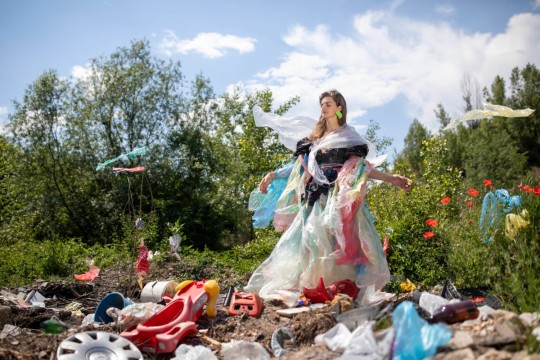
View On WordPress
#banjaluka#bih#fast fashion#lifestyle#milica pralica#moda#održiva moda#slow fashion#Street style#sustainablelifestyle#the milas blog#zero waste lifestyle
1 note
·
View note
Text
Want To Start a Zero Waste Lifestyle? Learn How Today!
Embracing a zero waste lifestyle involves minimizing your production of waste by being mindful of your consumption and making sustainable choices. While achieving zero waste completely might be challenging, the goal is to significantly reduce the amount of waste we create. Here are some steps to hep with the transition to a zero waste lifestyle: refuse what you don’t need “Refuse” is one of the…

View On WordPress
#compost#eco friendly#environment#meal planning#minimal#minimalism#no waste#organic#recycle#refuse#reuse#save the earth#shop local#sustainable#zero waste lifestyle
0 notes
Text
Embrace a Life of Purpose: Embracing the Zero Waste Lifestyle
Embark on a transformative journey into the world of the zero waste lifestyle – a conscious way of living that not only reduces waste but also celebrates simplicity, mindfulness, and sustainable choices. Join us as we explore the active substances that define the zero waste lifestyle, revealing why adopting it isn't just a trend; it's an investment in a cleaner planet, a clutter-free home, and a celebration of the art of living with intention.
I. Where Conscious Choices Flourish: Introduction to the Zero Waste Lifestyle Imagine a world where every action has a purpose and every item serves a meaningful role. The zero waste lifestyle offers this purpose-driven existence, redefining how we interact with our environment.
II. Elements of Sustainable Living: Active Substances of the Zero Waste Lifestyle
Reduce, Reuse, Recycle: The Three R's of Waste Reduction Dive into the world of minimalism. The zero waste lifestyle emphasizes reducing waste, reusing items, and recycling materials to minimize environmental impact.
Composting and Natural Solutions: Nurturing the Earth Explore the magic of composting. The zero waste lifestyle encourages composting organic matter to enrich soil and divert waste from landfills.
Mindful Consumption: Embracing Quality over Quantity Uncover the power of conscious choices. The zero waste lifestyle promotes mindful purchasing, focusing on durable, eco-friendly, and locally-made products.
Plastic-Free Initiatives: Reducing Plastic Pollution Witness the impact of plastic reduction. The zero waste lifestyle strives to eliminate single-use plastics, minimizing pollution and protecting marine life.
III. Embrace Purposeful Living: Why Choose the Zero Waste Lifestyle?
Reduced Environmental Footprint and Waste Imagine a world with less waste. Embracing the zero waste lifestyle significantly reduces your ecological impact and contributes to a cleaner environment.
Simplicity and Clarity in Daily Living Embrace the beauty of minimalism. The zero waste lifestyle declutters your space and mind, allowing you to focus on what truly matters.
Health and Well-Being Experience the benefits of toxin-free living. The zero waste lifestyle encourages using natural and non-toxic products for improved health.
Positive Global Impact and Community Engagement By choosing the zero waste lifestyle, you celebrate global citizenship. Your choices inspire others and contribute to a more sustainable world.
IV. Cultivate Intentional Living: Where the Zero Waste Lifestyle Leads As we explore the world of the zero waste lifestyle, we invite you to redefine your relationship with consumption and advocate for change. Its active substances are the threads that weave a tapestry of conscious choices, environmental stewardship, and the art of living with intention.
Deepen your understanding of the zero waste lifestyle with Wikipedia reference.
Choose a purposeful journey. Embrace the zero waste lifestyle today and unlock a world of environmental harmony, mindful living, and a celebration of your ability to contribute to a more sustainable Earth. Let your commitment to waste reduction redefine the way you perceive consumption, transforming your choices into a statement of your dedication to conservation, a contribution to global well-being, and a tribute to the creative possibilities that arise from mastering the art of the zero waste lifestyle.
"For expert advice and guidance, visit our website 'Ask the Experts' section."
0 notes
Text

x via formulasantander
#charles leclerc#f1#*#b roll#low key hate how this turned out bc santander has thee weirdest lighting but let's adopt a zero waste lifestyle
548 notes
·
View notes
Text
Underconsumption core trend
On TikTok lately there is a fashion/lifestyle trend going on, the underconsumption trend.
The main types of underconsumption are:
• The Zero Waste Underconsumption Core: Vintage, thrift store, zero waste stores, buy in bulk, local grocery shopping, gardening and sewing.
• The Fashion Brand/Thrift Underconsumption Core: Thrift stores, buy from big shopping brands (few quality pieces), local grocery shopping.
• The Luxurious Underconsumption Core: Buy luxury items (few every year), thrift shopping, zero waste stores, cooking at home, vegan or cruelty-free makeup.
• The Cottage Underconsumption Core: Vintage shopping, buy from the market, local grocery shopping, home making things, cooking mainly at home, crafts.
My opinion choose to do whatever suits you the best. You do not have to get rid of everything or buy new things from a zero waste store and give €500.00 on sustainable fashion brands. First use what you have, open your closet and make three piles. On one side place the clothes you wear, the other one the clothes you love but you are going to wear for sure on a special day and on the other side choose which clothes you haven't worn in years. Do that with shoes, bags, accessories and makeup. The next thing check the makeup and skincare products you buy. Are they safe or are they carcinogenic. You do not need two aprons, you only need one. Stop buying plastic taperware, switch to glass.
Less is more
#fashion magazine#girl blogging#tumblr girls#underconsumption#consumerism#consumer culture#zero waste#eco lifestyle#tiktok trend
28 notes
·
View notes
Text
Simple Tips
Store fruit and veggies whole. This will allow them to keep longer, as their surface degrades faster when it has been cut and exposed to air – makes sense, right?
Handle your fruit and veggies gently, as bruises and cuts will lead to rotting which can also spread to other veggies stored nearby.
10 Rapidfire Veggie Storage Tips
#1 Leafy Greens
Lettuce, spinach, rocket, kale and chard can be stored in a sealed container or reusable produce bag in the fridge after being washed and spun to promote hydration.
#2 Tomatoes, Chilli & Capsicums
Fresh tomatoes, chillies and capsicums should be stored on the bench at room temperature until ripe. To preserve for longer, just pop them in the fridge.
#3 Garlic, Onions & Potatoes
Store in a cool dark place and they will keep well for up to a few months. Hint: don’t store potatoes with onions and garlic, as they release gases that may quicken decay.
#4 Pumpkins or Squash
Whole pumpkins can be stored for months in a cool, dry place out of direct sunlight. Sliced pumpkin should be stored in the fridge with the seeds removed, as these decay faster than the flesh.
#5 Cucumbers, Zucchini, Eggplant & Fennel
These immature fruits have thin skin that is sensitive to bruising and cuts, so handle carefully. Store them dry in the fridge in an unsealed reusable bag to allow for airflow.
#6 Carrots, Celeriac & Parsnip
Storing them in a reusable bag in the fridge with their tops removed will allow them to last for over a week (or longer).
#7 Beetroot, Turnips & Radish
Remove the leaves as soon as you get home to preserve the moisture within the roots (keep the leaves for compost or to feed your chickens or worm farm). Store the roots in a reusable produce bag in the fridge.
#8 Cabbages, Broccoli & Cauliflower
As broccoli and cauliflower are the unopened flower buds of a plant, they are best consumed within 3 to 4 days, before they begin to open and turn yellow. Store them in a crisper in the fridge in a reusable bag. Cabbages, however, will last for weeks.
#9 Celery & Soft Herbs
Celery and soft herbs such as parsley, chives and basil can be stored in a jar of water on the kitchen bench at moderate room temperature. Otherwise, in hotter months they can be washed and wrapped in a damp tea towel in the fridge.
#10 Dry Herbs
Dry herbs such as rosemary, thyme and oregano can be stored on the kitchen bench. The flavour becomes more potent as the herb dries, allowing them to keep for a long time. Once fully dry, seal in a container to sprinkle over your food later.
#txt#zero waste#mindful consumption#mindful living#slow living#soft living#plant based lifestyle#wfpb#adulting#life hacks#sustainability#eco conscious#ecofeminism#wellness lifestyle#holistic leveling up#leveling up#that girl#green juice girl#vegan#raw vegan#whole food plant based#nutritarian#seasonal living#sidewalkchemistry
146 notes
·
View notes
Text
Ask yourself before you commit!
How badly do I need this?
How often will this get used?
If I am using this one time, why? Can this be reasonably reused by me again?
Can I get this second hand?
Why do I want this from a name brand store in the first place, is it out of habit? Is it because everyone around me is doing it?
If it’s a single use item, can I use a component of it for something else? (Ex: diversion safe, pen holder)
Will I need or use it in the next 6 months?
Does a friend or a family member have one of these that I can borrow?
WAIT! There are tons of this at the thrift store, why am I going to waste lots of money here? Is this a habit?
Why do I feel like I need this? Will this impulse buy make beneficial changes in my life?
#recycled words#slow fashion#slow living#reduce reuse recycle#stop impulse buying#resource#zero waste lifestyle#waste free the way to be#eco friendly
12 notes
·
View notes
Text
Affordable Zero Waste: How Sustainability Can Save You Money?
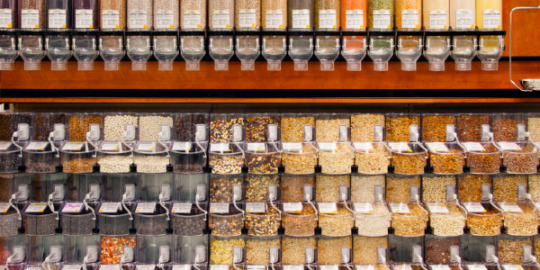
View On WordPress
#sustainable#budget-friendly sustainability#community sharing#conscious consumption#cost of zero waste#DIY zero waste#is zero waste expensive#sustainable lifestyle#sustainable living#zero waste#zero waste lifestyle
0 notes
Text

#sustainable living#sustainable home#sustainablefashion#sustainableliving#sustainability#ecofriendly#eco friendly#eco friendly living#sustainable lifestyle#sustainable habits#environmental impact#environmentallyfriendly#environmentalism#low waste#zero waste#reduce reuse recycle#crunchy mom#homemaking#hippie mom#dark cottagecore#cottagecore#cottage aesthetic#cozy cottage#solarpunk#cozy aesthetic#hippie aesthetic#eco lifestyle#eco living#low impact#health is wealth
5 notes
·
View notes
Text
Green Tatwa Talks Ep 51 – In conversation with Nilima Mohite - Sunilima Sustainable Solutions
“Do not wait for extraordinary circumstances to do good action; try to use ordinary situations.” – Jean-Paul Richter Sustainable solutions are strategies and practices aimed at meeting current needs without compromising the ability of future generations to meet their own needs. These solutions often balance environmental health, economic viability, and social equity. Here are some key areas…
#sustainableLiving#Bio Enzymes#composting#Sustainable Solutions#Zero Waste Lifestyle#zero waste living
0 notes
Text
20 Sustainable Alternatives to Disposable Items for Zero-Waste Living
Living a zero-waste and minimalist lifestyle is all about making mindful choices that reduce waste and simplify life. One of the most impactful changes you can make is to eliminate disposable items from your daily routine. These items not only contribute to environmental pollution but also add unnecessary clutter to your life. By replacing disposables with sustainable alternatives, you can…

View On WordPress
6 notes
·
View notes
Text






https://ritaluckysoap.etsy.com/listing/1491367310/eucalyptus-peppermint-soap-vegan
#cold process soap#christmas gift#made with love in malaysia#eucalyptus soap#mint soap bar#eco lifestyle#zero waste#life#artisan soap#etsyhandmade#etsy#etsyshop#small business#https://ritaluckysoap.etsy.com
5 notes
·
View notes
Text
Simple Ways To Embrace Sustainable Living in Your Daily Life

Are you tired of feeling like your day-to-day routine is contributing to the destruction of our world? Do you wish to make a difference but don't understand where to begin? Well, look no further because we have actually got you covered!
With our article "Simple Ways To Embrace Sustainable Living in Your Daily Life", we aim to provide you with practical and simple actions to include sustainable living practices into your everyday regimen. From reducing plastic waste to conserving energy, small modifications can make a big distinction in creating a more eco-friendly lifestyle.
In this article, we'll talk about tips and techniques that are both great for the environment and beneficial for your health and wallet. Whether you're a university student, a working specialist, or a stay-at-home mom or dad, our detailed guide will assist you take those crucial very first actions towards a sustainable lifestyle.
Table Of Contents
1. Understanding Sustainable Living 2. Decreasing Carbon Footprint 3. Public Transport and Sustainable Commute 4. Single-Use Plastic Alternatives 5. Food Choices and Sustainable Consuming 6. Mindful Consumption and Ethical Fashion 7. Waste Management and Recycling 8. Conclusion
youtube
Understanding Sustainable Living

Sustainable living is a conscious option to live in a more environment-friendly way that lowers greenhouse gas emissions and decreases our negative environmental impact on the planet. It means choosing to be more conscious of the natural deposits we utilize and discovering methods to both decrease and recycle products in our daily lives. Here are some practical and simple ways you can start accepting green living in your everyday life:
1. Start with the essentials
Begin by making little modifications to your day-to-day routine that can have a big impact in the long run. This consists of shutting off devices and lights when not in use, taking shorter showers, and utilizing environmentally friendly cleansing items. These simple steps can help in reducing your carbon footprint and save energy and resources.
2. Buy reusable products
Single-use products like plastic bags, straws, and water bottles have a substantial unfavorable effect on the environment. By investing in reusable items, such as cloth bags, metal straws, and reusable water bottles, you can substantially minimize the amount of waste you produce and help secure the world.
3. Select sustainable transport choices
Automobiles are a significant factor to greenhouse gas emissions. By picking sustainable transportation choices like public transport, biking, or strolling, you can reduce your carbon footprint and add to a healthier planet.
4. Bear in mind your food choices
The food industry has a substantial impact on the environment. By picking natural and locally produced foods, decreasing meat usage, and preventing food waste, you can lower your environmental effect and promote sustainable living.
5. Choose sustainable style
The fashion business is a significant contributor to greenhouse gas emissions, pollution, and waste. By selecting ethical and sustainable style choices, you can help lower the negative impact of the industry on the environment.
6. Practice conscious consumption
Prior to making a purchase, ask yourself if you truly need it and if it aligns with your values of sustainable living. Consider choosing items made from sustainable materials and choose for product packaging that can be recycled.
7. Manage your waste
Proper waste management and recycling is key to minimizing our negative influence on the planet. Arrange your waste into recyclable and non-recyclable materials, and ensure to get rid of them properly. Consider composting natural waste to produce nutrient-rich soil for your garden.
Decreasing Carbon Footprint
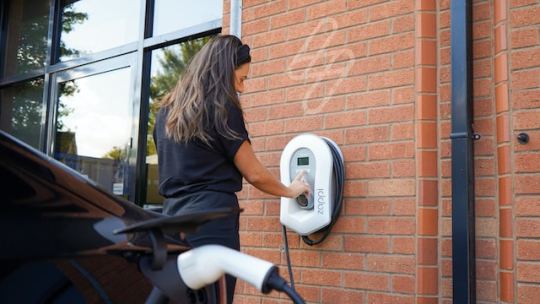
Minimizing your carbon footprint is among the most efficient ways to accept sustainable living. Here are some basic actions you can take:
1. Reduce energy intake: Decreasing your energy usage is a great way to decrease your carbon footprint. Consider turning off lights and appliances when not in use, using energy-efficient light bulbs, and disconnecting electronics when they are not being used. This can make a huge difference in reducing energy use, which in turn lowers greenhouse gas emissions.
2. Use natural light: Take benefit of natural light by opening drapes and blinds throughout the day. Not just does it supply terrific lighting, but it also helps you reduce your energy usage.
3. Stroll or bike: Try walking, cycling or utilizing public transportation instead of driving when possible. This can assist decrease the amount of greenhouse gases that are released from cars and other automobiles.
4. Shop sustainably: Consider buying products that are made from sustainable materials, are eco-friendly, or are produced in an environment-friendly way. This helps in reducing the demand for items that contribute to greenhouse gas emissions.
5. Reduce waste: Try to lower the amount of waste you produce by composting, recycling, and using re-usable bags and containers instead of disposable ones. This helps reduce the quantity of waste that ends up in landfills, which can contribute to greenhouse gas emissions.
6. Conserve water: Conserving water is likewise a great way to reduce your carbon footprint. You can do this by repairing leakages, taking shorter showers, using low-flow faucets and toilets, and collecting rainwater for plants.
7. Consume a plant-based diet: Eating a plant-based diet plan can also help in reducing your carbon footprint. This is since animal items need more resources to produce than plant-based items, and their production can contribute to greenhouse gas emissions.
Public Transport and Sustainable Commute
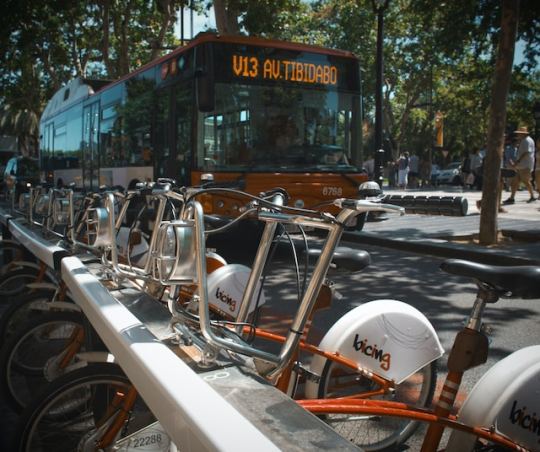
When it pertains to reducing your carbon footprint and greenhouse gas emissions, one of the very best ways to do so is by making use of mass transit. Not just does this help to reduce traffic blockage, but also assists to minimize the number of cars on the road. Here are some practical and easy actions to integrate sustainable transit practices into your day-to-day commute:
Use Mass Transit
-Benefit from buses, trains, and trains whenever possible.
-By making use of public transport, you're helping to decrease the variety of automobiles on the roadway, which can result in fewer greenhouse gas emissions.
Carpooling
-Consider carpooling with coworkers, pals, or household members to lower the number of cars on the roadway.
-This is an excellent way to minimize traffic, while also decreasing your carbon footprint.
Cycling and Strolling
-If you're not too far from your location, consider biking or walking.
-These sustainable commute alternatives not just lower your carbon footprint, but they can also benefit your health!
"Cycling and strolling not just decreases your carbon footprint however likewise assists fight climate change, as it reduces energy usage and decreases the number of vehicles on the roadway." -Andy Murdock, Transportation and Environment Program Director.
Use Sustainable Commute Tools
-Use online tools, like Google Transit or Citymapper, to help plan your sustainable commute.
-This can help you find the finest transit routes, bike paths, and walking instructions in your city.
Single-Use Plastic Alternatives

Single-use plastics are a considerable contributor to plastic waste in the environment. By making a few basic changes in your life, you can minimize your usage of single-use plastics and help make a positive impact on the environment.
1. Bring multiple-use shopping bags to the grocery store: Rather of using plastic bags that wind up in garbage dumps or oceans, bring your own recyclable bags. Not only is this an easy way to minimize your plastic use, however numerous stores and markets offer incentives for bringing your own bags.
2. Use a reusable water bottle: Plastic water bottles are a significant contributor to land fill waste. By using a multiple-use water bottle, not only will you decrease your plastic waste, however you'll also conserve cash in the long run.
3. Swap plastic straws for multiple-use ones: Americans use and throw away countless plastic straws every day, contributing to the plastic pollution crisis. Swap out plastic straws for stainless-steel, glass, or bamboo straws that are recyclable and washable.
4. Select recyclable food containers: Instead of utilizing cling wrap or non reusable containers to save your food, think about utilizing recyclable glass or silicone containers. Not only are they much better for the environment, but they also make for simpler and more efficient food storage.
Food Choices and Sustainable Consuming
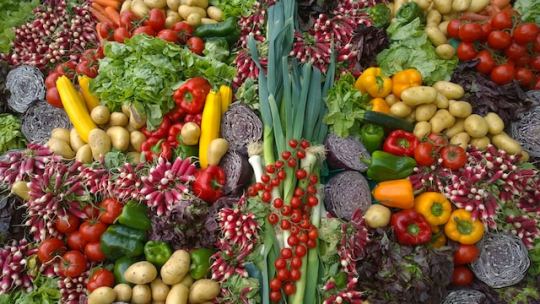
One of the most effective ways to accept sustainable living practices is to make mindful choices about the food you consume. By choosing eco-friendly food choices, lowering food waste, and supporting local farmers and growers, you can considerably affect the environment and promote sustainable living.
Here are some easy and practical suggestions to assist you incorporate sustainable food options in your everyday regimen:
1. Choose Plant-Based Alternatives: Meat production has a significant impact on the environment, as it requires large amounts of water, land and energy. By reducing your meat consumption and choosing plant-based alternatives, you can reduce your carbon footprint and also have a healthier lifestyle.
2. Lower Food Waste: Did you understand that almost one-third of all food produced around the world is squandered every year? Minimizing food waste is not just great for the environment, but also for your wallet. Strategy your meals, make a grocery list, and purchase only what you need. Utilize all parts of fruits and vegetables, and store them effectively to avoid putridity. Donate excess food to regional shelters and charities.
3. Support Local Farmers: Buying regional produce not only supports the neighborhood but also promotes sustainable farming. By picking to purchase from local farmers and growers, you decrease the carbon footprint related to long-distance transport, and you get fresh and healthy food. Go to farmer's markets, community-supported agriculture (CSA) programs, and regional food co-ops to discover sustainable and locally-grown foods.
4. Select Sustainable Seafood: The oceans are an essential part of the environment and provide a source of nutrition for millions of individuals. However, overfishing and unsustainable fishing practices have placed many fish species in danger. Pick sustainably gathered seafood alternatives, look for eco-labels such as the Marine Stewardship Council (MSC) or Aquaculture Stewardship Council (ASC) and prevent seafood that is on the red list of threatened types.
5. Grow Your Own Food: Growing your own food promotes self-sufficiency and decreases your carbon footprint. Even if you don't have a large yard, you can grow herbs, veggies, and fruits in small pots and even in your cooking area. This is a terrific method to get fresh and natural produce, and likewise to get in touch with nature.
Mindful Consumption and Ethical Fashion

From food to fashion, we consume a vast array of products daily. One of the significant threats to the environment is fast fashion. Fast fashion is a term used to describe an industry that produces clothes quickly and exploits labor and environmental laws.
So, how can we minimize our ecological effect through mindful usage and ethical fashion?
1. Buy pre-owned clothing
Rather of buying brand-new clothes, explore thrift stores, yard sale, and online markets like eBay, Poshmark, or ThredUp. Purchasing pre-owned clothes is a sustainable practice that decreases waste and supports the circular economy.
2. Buy quality clothing
Purchasing quality clothing might cost more in the brief term, however it pays off in the long run. Quality clothes last longer and decrease the need for regular replacements. Try to find clothes made from natural, naturally degradable, or recycled products.
3. Lease clothing for special events
Instead of purchasing new gowns or fits for special celebrations, lease them. Renting clothes is a sustainable practice that saves money, lowers waste, and helps to keep the clothing out of land fills.
4. Consider the ethics of the brand
Take a conscious choice and think about the ethics of the brand name before buying. Research the brand name's labor practices, ecological policies, and commitment to sustainability. Select brand names that focus on ethical sourcing, fair labor, and utilize sustainable materials.
5. Support local brands
Supporting regional brand names is a terrific method to minimize the environmental impact of fashion. Regional brands often produce clothing on a smaller scale, use less energy for transport, and support the local economy.
Waste Management and Recycling
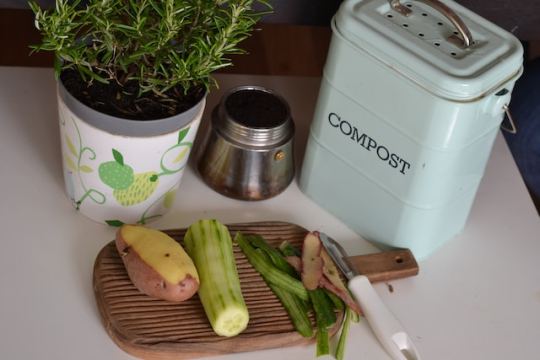
If you're looking to embrace sustainable living practices in your life, among the crucial locations to focus on is waste management and recycling. By decreasing the amount of waste you produce and recycling as much as possible, you can considerably reduce your carbon footprint and make a positive impact on the environment. Here are 10 easy steps to help you begin:
1. Establish a recycling station in your house. Designate a specific area in your cooking area or energy room to sort and store your recyclable items.
2. Purchase a yard waste bin. If your local government provides yard waste pickup, buy a designated bin so that you can compost garden waste and food scraps. This keeps raw material out of garbage dumps and can even result in nutrient-rich soil for your garden.
3. Many mainstream personal care products contain not only harsh chemicals but also packaging materials that can't be recycled. Switching to eco-friendly alternatives is not only better for your health but also for the planet.
4. Repair and fix clothing instead of throwing it away. These easy steps can significantly extend the life of your clothing and minimize fabric waste.
5. Shop with reusable bags and containers. Bring a multiple-use shopping bag with you to avoid wasting single-use bags at the supermarket. Think about utilizing refillable containers for items like bulk grains, nuts, and oils to lower unneeded packaging waste.
6. Compost your food scraps. If you do not have access to backyard waste pickup, consider starting a compost heap in your yard or utilizing a composting bin to break down food scraps.
7. Contribute undesirable items rather of throwing them away. Lots of household items can be donated to charity rather than ending up in a landfill. Clothing, furnishings, and kitchenware are just a few examples of products that can be offered a brand-new lease of life.
8. Use rechargeable batteries instead of disposable ones. Batteries contain products that can be hazardous to the environment if not disposed of appropriately. Changing to rechargeable batteries is a simple way to decrease waste.
9. Minimize junk mail. Register for services to eliminate your name from direct-mail advertising to lower the quantity of paper waste produced by scrap mail.
10. Carry out a clean-up day in your regional community. Get together with your neighbors to tidy up your parks and beaches. This not only assists the environment but also encourages community participation.
Conclusion
Integrating sustainable living practices into your daily routine doesn't have to be frustrating or tough. By implementing little modifications, such as reducing waste, picking environmentally friendly items, and utilizing alternative transport methods, you can make a huge influence on the environment and live a more environmentally friendly lifestyle. Why not start today? Select a couple of the pointers we've shared and dedicate to integrating them into your daily life. Together, we can produce a more sustainable and flourishing world for future generations. Do not forget to share this article with your pals and family to assist get the word out and inspire others to join the sustainability movement.
#Youtube#sustainable living#sustainability#green living#eco friendly#sustainable lifestyle#environmentallyfriendly#reduce#reuse#recycle#mindful living#ethical living#zero waste#sustainable choices#eco conscious#green tips#sustainablecommunity
13 notes
·
View notes